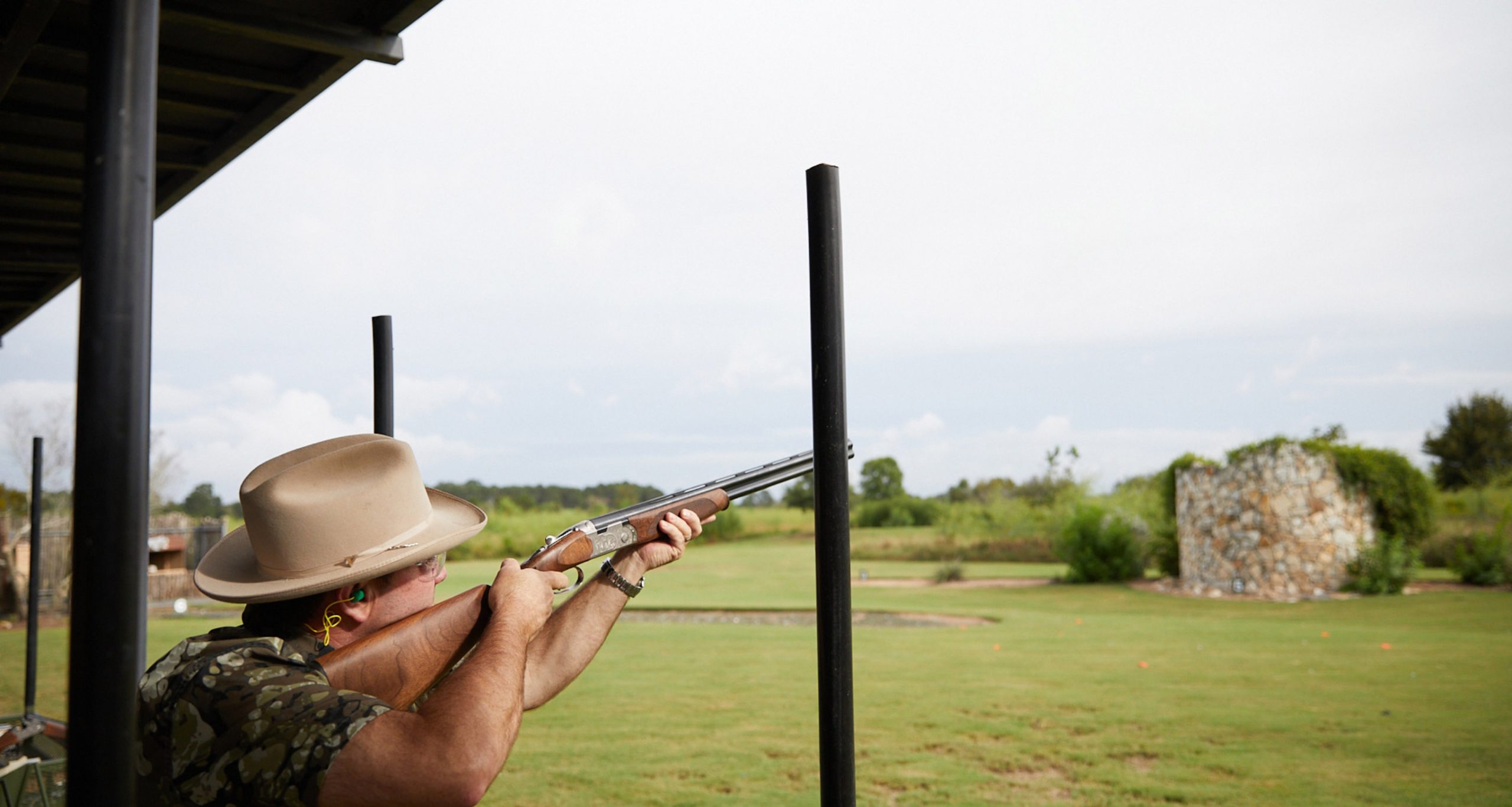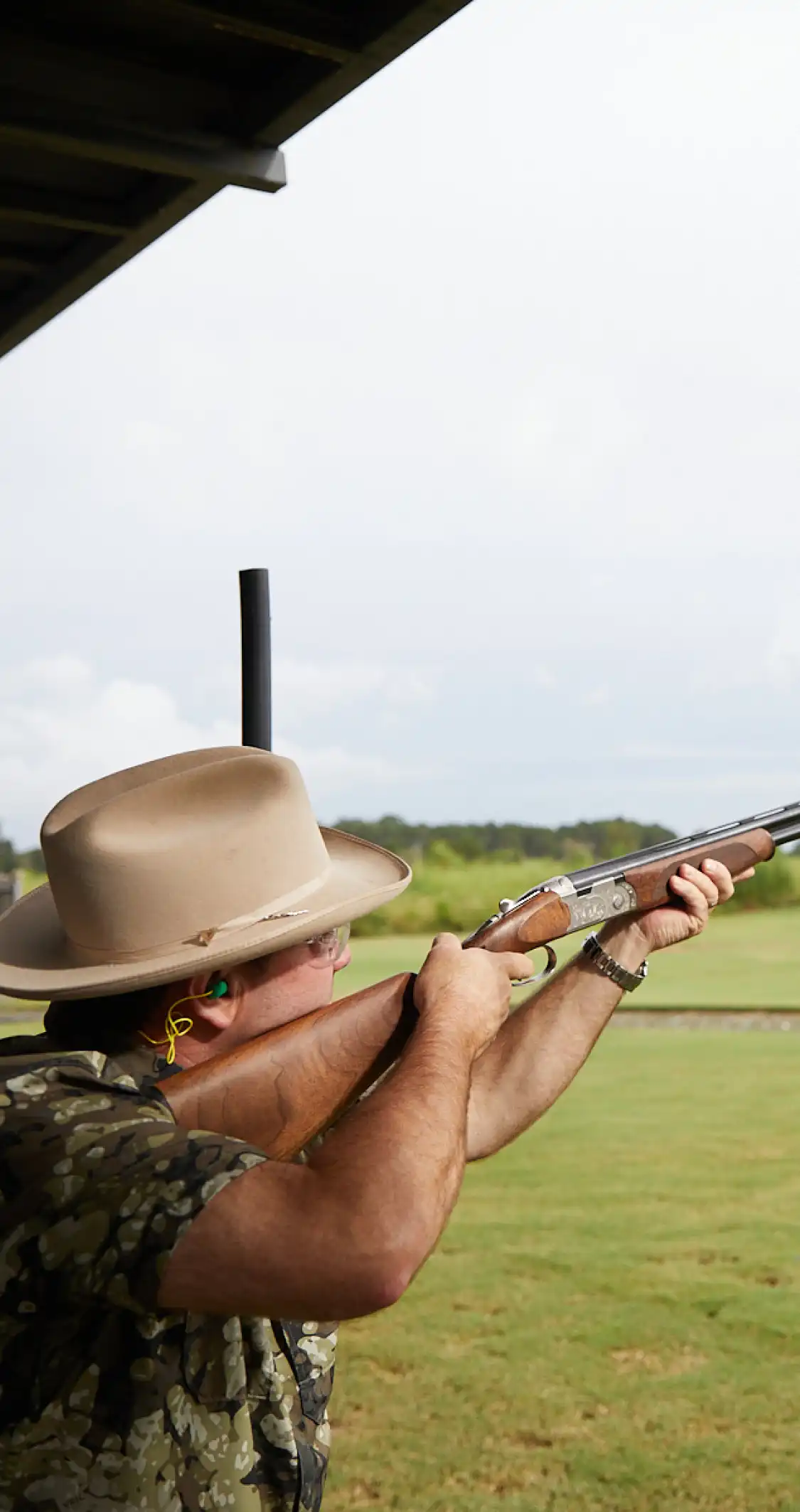
I’ve always viewed a shotgun as a tool—similar to a fishing rod—because it can unlock so many opportunities for people looking to get into the outdoors. Should shotguns be respected and treated just like any other firearm? Yes, absolutely. But to me, a shotgun lives in a category of its own because of its approachability, versatility, and knack for accompanying good times in the field.
A scattergun, as the Texas Rangers called it, can be used in more ways than you may realize. It opens up the pursuit of game species that are too many to list here, from quail and dove to white-tailed deer and wild hogs, and it also opens up the sport of competitive (or not-so-competitive) shooting. Adding to its accessibility factor, shotgun shells are relatively cheap and plentiful.
Due to its overall simplicity and the gentle nature of lighter gauges, a shotgun is a great way to show new hunters and shooters their way around a firearm. But here’s the problem: the majority of us pick up a shotgun and just assume it’ll do the work for us. Then we find ourselves at the dove hunt, with little gray torpedoes flying around and nothing but a box of empty shells at our feet. Trust me, the old “I thought I cleaned this gun” trick isn’t going to fool anyone.
The good news is that it’s not too late. Learning how to fit, mount, and shoot a shotgun are foundational skills for any hunter and my goal is to help you build that foundation. In this two-part series, we’re going to tackle both the proper fit and mount for a shotgun and then how to put those techniques into action with the fun part.
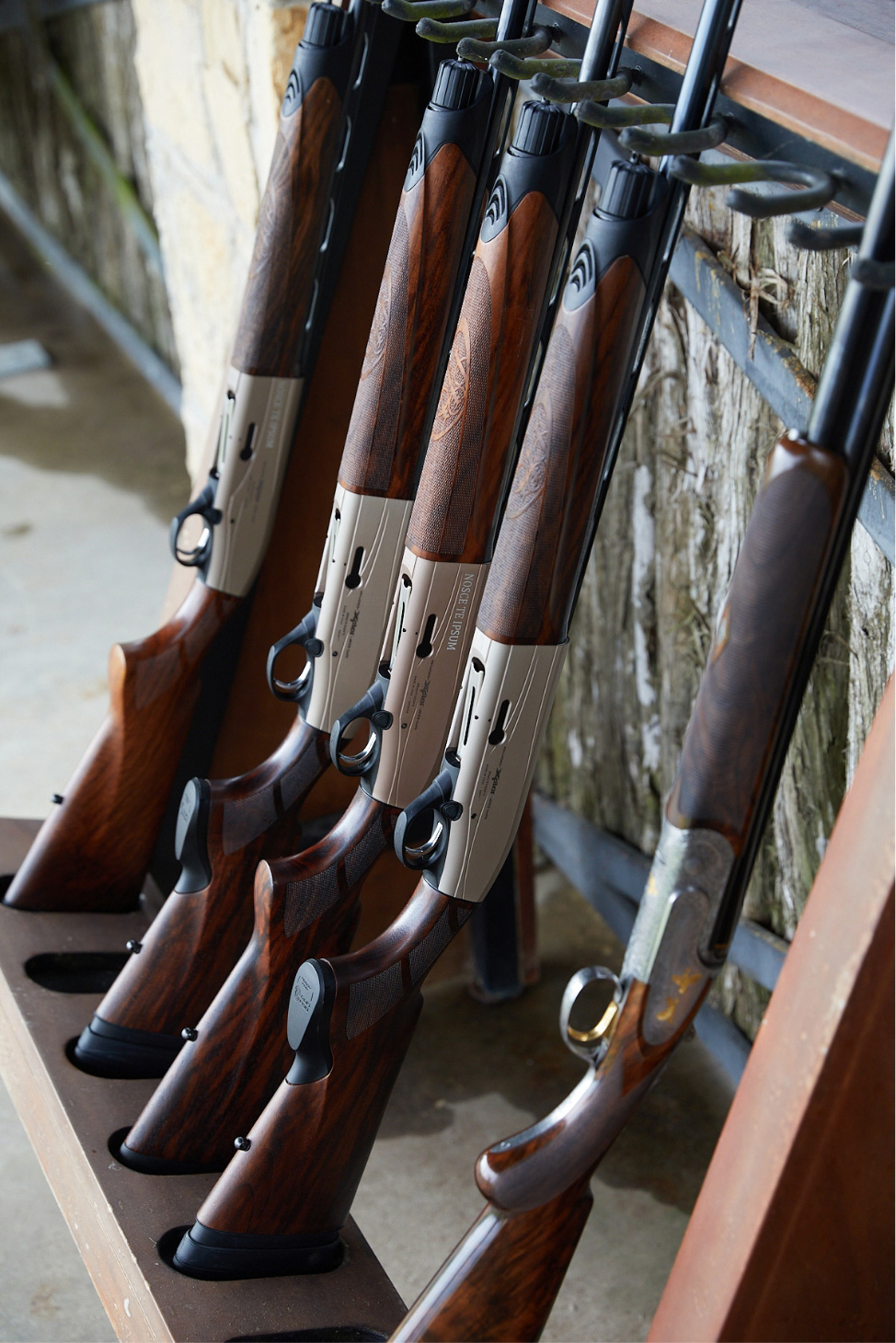
The beauty of shotgunning is that it relies more on the shooter than the equipment. Of course, a beautiful gun doesn't hurt.

Shooting a shotgun straddles the line between art and technique. You can’t worry about the nuts and bolts of shooting when a bird flushes or a clay target skips across your field of view.

The beauty of shotgunning is that it relies more on the shooter than the equipment. Of course, a beautiful gun doesn't hurt.
Gun fit
Shooting a shotgun straddles the line between art and technique. You can’t worry about the nuts and bolts of shooting when a bird flushes or a clay target skips across your field of view. It has to be a reaction. With that in mind, much of the “technique” of shotgunning happens before you ever load a shell into the chamber. It starts with fit.
Go to the pro
First and foremost, if you’re new to shooting, go to a professional. Find a local shop with an expert and let them walk you through the fitting process and help you pin down the shotgun that’s best for you and your pursuits. If you’re looking for top-of-the-line shotguns and hard-earned experience, my go-to in the Houston area is Gordy & Sons. Even if you’re not in the market, it’s worth checking out their collection.
The blind test
When you’re looking at shotguns, start by shouldering the gun (unloaded, of course) with your eyes closed. Once you’re in a shooting position, open your eyes. Are you oriented down the barrel? Do you have a clear view past your bead (the sight at the end of the barrel)? Does the gun feel comfortable or is it awkward? Try this a few times to get a general idea of how the gun feels before moving forward.
Length of pull
One of the primary considerations for gun fit is its “length of pull,” which refers to the distance between the trigger and the end of the gun stock. A pull that is too short or too long will force you to mount and shoot the gun improperly, so a good fit is key here. With your hands around the stock and forend, lift the gun to your cheek and sight down the barrel. There should be a one- to three-finger gap between your nose and the base of your thumb—any farther and the pull is too long, and if your thumb is touching your nose, it’s too short.
Gun drop
A gun’s “drop” refers to the distance from the top of the barrel to the “comb”—the peak of the stock—as well as the “heel”—the far end of the stock. This fit is a bit more subjective and it primarily comes down to comfort and line of sight. For the comb drop, shoulder the gun and ensure your eye naturally sights along the barrel. Ideally, you’d be able to shoot a few clay targets or even paper targets to make sure you’re sighting correctly.
Generally speaking, field guns have a larger heel drop than guns designed for competitive target shooting. Some stocks are better for those with longer or shorter necks, but once again, a comfortable fit is more important and a drop of 1 ⅝" at the comb and 2 ½" at the heel is a good starting point for most people.
Gun cast
Some guns have a “cast,” which refers to a slight angle in the stock for right- and left-handed shooters. Right-handed guns are cast to the right (looking down the barrel), making it easy for the shooter to align their head over the barrel. For left-handed shooters mounting their gun on the left shoulder, the gun will cast to the left for the same reason. It’s worth noting that there are many guns with no cast at all, that are simply ambidextrous. For those southpaws out there, I know it can be tough to find the right fit for anything, shotguns included, so know that there are plenty of great left-handed shooters who’ve shouldered a right-handed gun—or just go with the cast-less option.
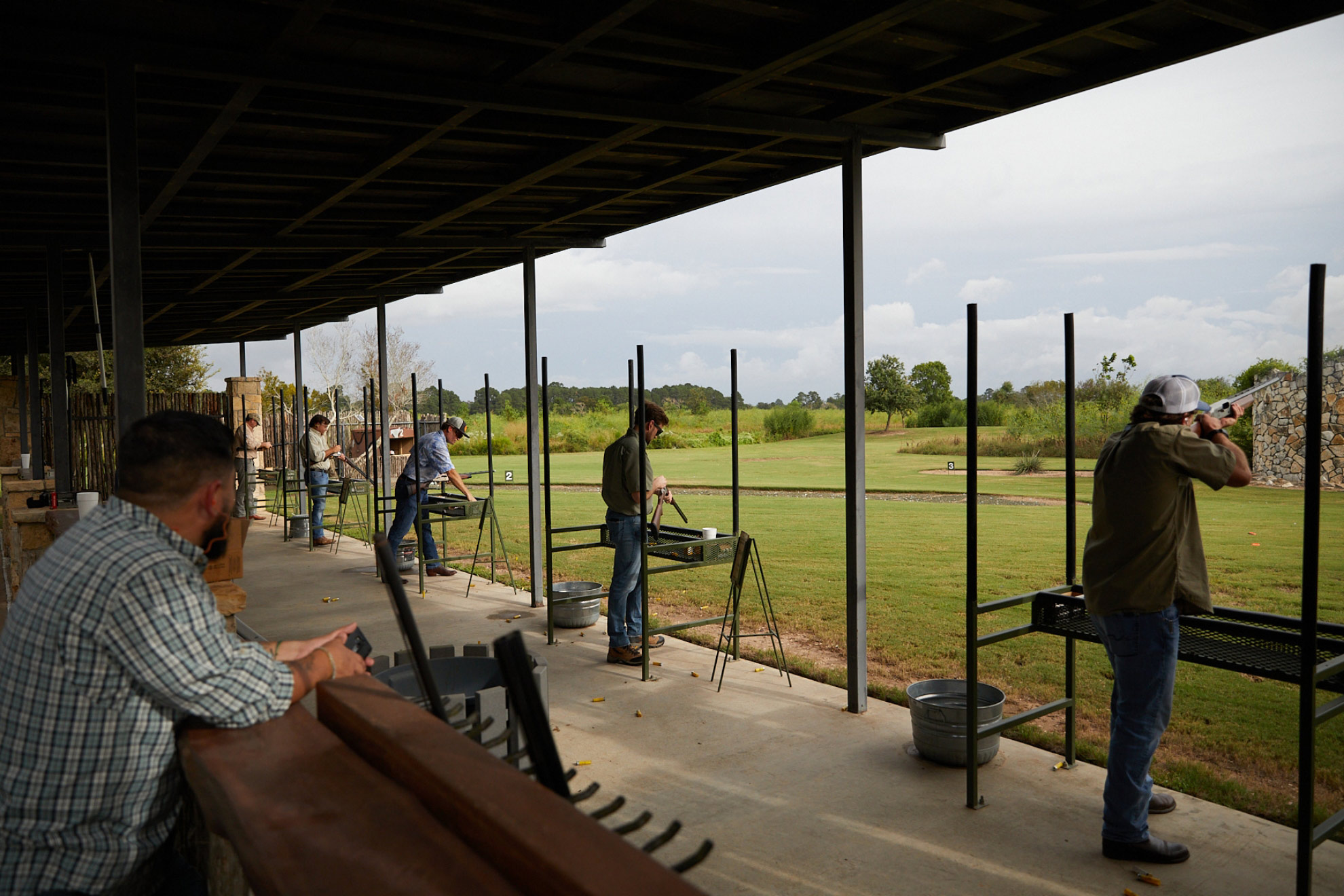
I doubt I need to tell you this, but safety is no. 1 whenever guns are involved. Be sure to ask an expert before you pick one up.
Gun mount/practice
Now that you’ve picked out your dream shotgun, it’s time to learn how to use it properly. You may think that mounting a shotgun should be part of the “shooting” section but I’ve split it out for a reason—not only because it’s incredibly important but also because it can happen well before you start shooting.
A dry run
Some of the best shooters out there are those who sit in their living room (gun unloaded—I’m going to keep saying that) and practice bringing their gun to shoulder. It may sound boring but it’s one of the best ways to get comfortable with your new gun and bake solid foundational skills into your subconscious.
There are a few options. First, go back to our blind test and repeat that process over and over again. Second, set up a few “targets” on a table and simply practice shouldering your gun and switching between targets. Lastly, if you really want to dial your skills, get a laser sight or a cheap laser pointer and attach it to your barrel. Being able to swing your gun along a straight line is important, and you can practice this indoors by tracing lines with the laser. You may be surprised at how difficult it can be to keep things steady and straight.

Your performance as a shooter is only as good as your mount, and it comes down to building solid habits. If you start early and practice often, mounting your shotgun will seem like second nature.

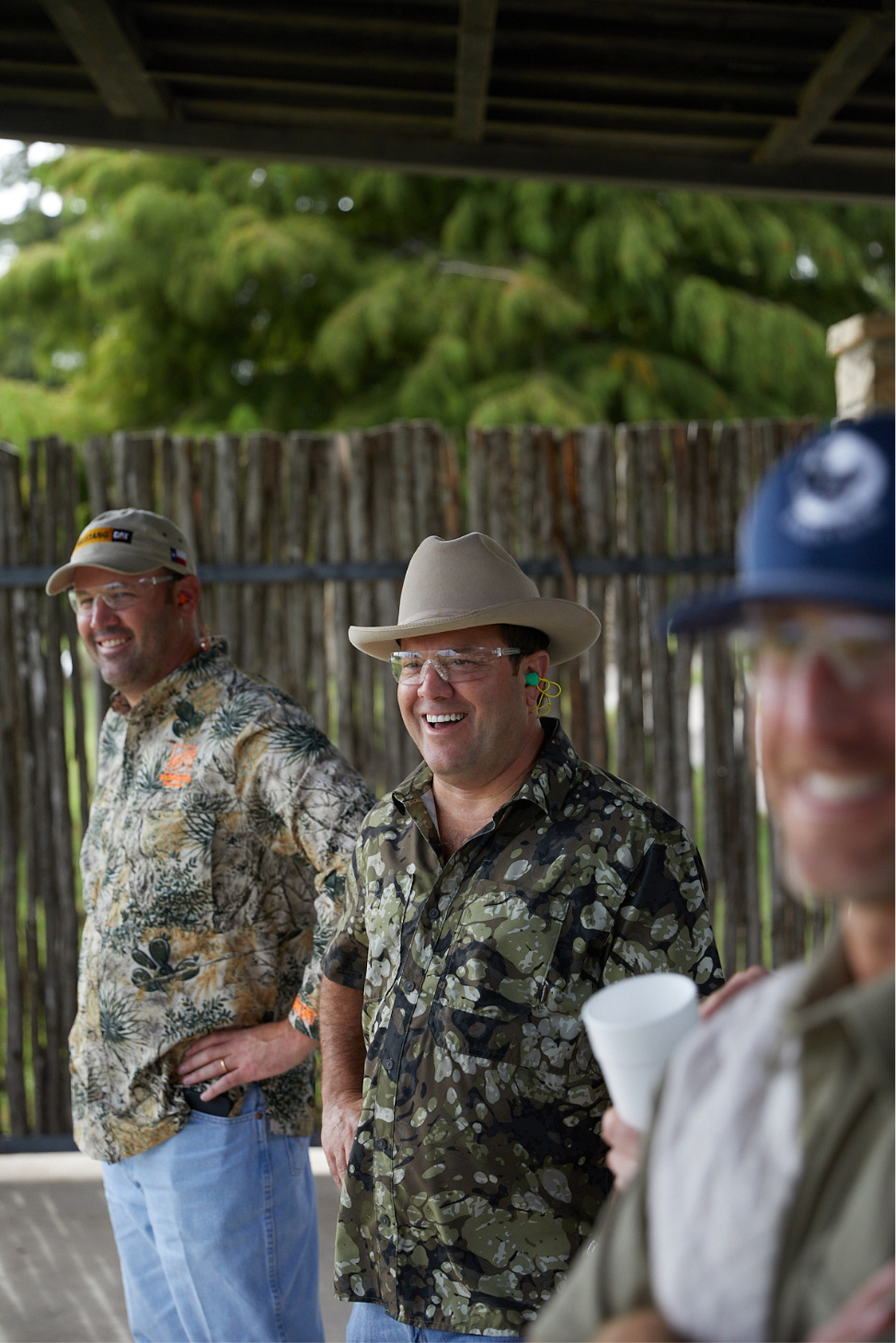
A Proper Mount
Your performance as a shooter is only as good as your mount, and it comes down to building solid habits. If you start early and practice often, mounting your shotgun will seem like second nature. Here’s how to do it: Raise your gun out and up. That’s it. Too many shooters only nail one part of this process, either raising the gun up and crowding their face or raising the gun out and craning their neck down to the barrel.
Your mount should be one fluid motion—moving the gun away from your body and lifting it to your cheek. You shouldn’t need to lower your head or adjust your positioning—the gun should adjust to you. As I said, it’s simple. Practice it over and over and over again at the beginning and you’ll be laying a solid foundation for any shot.
---
It’s easy to skim through this part of the process. Technically, you could pick up a shotgun on day one and go hunting or head out to the range, but the more time you spend on these techniques and foundational elements, the better you’ll do when it comes to Part Two—where we put all of this into practice and learn how to shoot.
Photography by Jody Horton.
